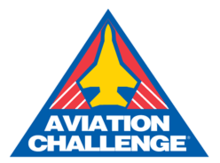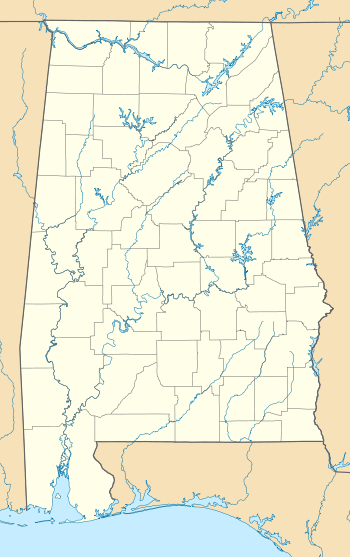Aviation Challenge
| Aviation Challenge | |
|---|---|
 | |
 | |
| Location | Huntsville, Alabama, U.S. |
| Coordinates | 34°42′38″N 86°39′30″W / 34.71056°N 86.65833°WCoordinates: 34°42′38″N 86°39′30″W / 34.71056°N 86.65833°W |
| Management | U.S. Space & Rocket Center |
| Website | http://www.aviationchallenge.com/ |
Aviation Challenge is a camp located in Huntsville, Alabama that is an alternative to Space Camp. Aviation challenge is more closely related to fighter aircraft than it is to space. The camp is a military based one that teaches many basic flying skills with in-depth simulators.
Programs
Aviation Challenge offers multiple programs based on camper's age. Each program is of increasing difficulty compared to the one before, however completion of previous programs is not a necessity to attend a more advanced program. The programs are a five day day camp for (7 to 9 yrs), six-day programs for the Mach I (9 - 11 yrs) participants, Mach II (12 - 14 yrs) participants, and Mach III (15 -18 yrs), and a twelve day advanced Mach III program offered exclusively to the alumni of six day Mach III program.
Mach I[1]
Mach I is the AC program for children from 9 to 11. Campers learn basic flying skills, such as taking off and landing, dog-fighting, and ground munitions delivery, are giving an introductory course in flight dynamics, while having the opportunity to participate in survival training on both land and water. The week culminates with a head to head Top Gun dog fight competition.
Mach II[2]
Mach II is designed for teens from the ages of 12-14. In Mach II the basic flying skills from Mach I are expanded upon the cockpit simulator is now more advanced, and the rules of combat are more stringent. All pilots still fight head to head in the Top Gun competition at the end of the week. Along with flying campers also learn patrolling, land, and water survival skills which culminates in a SEAL OPS Search and Rescue (SAR) mission during the day, and an escape and evasion activity that night.
Mach III[3]
Mach III is the final stage of AC, designed for teens aged 15–18. Flying in Mach III becomes even more advanced, using full sized simulators, communications, and the pairing of a pilot and RIO (Radar Intercept Officer). Mach III campers once again learn land and water survival, using equipment such as the "helo-dunker" to simulate a helicopter crash into water and a zip line to simulate a parachute landing. The week ends with an extensive Navy SEAL OPS mission and very challenging escape and evasion activity.
In 2005, Mach III added a 12 day version for their die hard trainees which adds activities such as paintball, MOUT, and SERE.
Activities
The Mach I trainees use the simplest and easiest to control simulators. They also have a less challenging SEAL OPS mission and a simple Escape & Evasion. The Mach II trainees use more advanced simulators that are very similar to those of the Mach I sims. The SEAL OPS mission is more challenging with an even more difficult Escape & Evasion. The Mach II trainees also have more difficult and complex missions. The Mach III program is the most difficult program of the three. There are more complex simulators that include pull down glass canopies when flying, as well as the traditional pilot and RIO/WSO two person cockpit seating. Mach III also features scored missions with Theater Ops military style briefings where trainees are meticulously inspected before being allowed to enter briefing rooms. They also have a much more intense SEAL OPS. The Mach III program also has the opportunity to be the longest which can span up to 12 days. There are many other activities that are done in the camp such as rafting, g force simulators, wilderness survival skills, and flight equipment lectures.
Displays
The Aviation Challenge Campus houses a wide variety of aircraft such as:
- F-14A Tomcat Bu-No 160661
- F-16B Fighting Falcon
- MiG-17 'Fresco'
- T-38 Talon
- F-111C Aardvark
- F-4 Phantom II
- AV-8B Harrier II
- Kaman SH-2F Seasprite Bu-No 162583 "Lamplighter 342"
References
- ↑ http://www.spacecamp.com/ac/camp/mach1
- ↑ http://www.spacecamp.com/ac/camp/mach2
- ↑ http://www.spacecamp.com/ac/camp/mach3